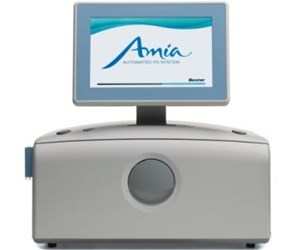FDA Clears Baxter's Web-Connected Peritoneal Dialysis System
By Jof Enriquez,
Follow me on Twitter @jofenriq

Renal solutions company Baxter International, Inc. announced recently that the U.S. Food and Drug Administration (FDA) has granted 510(k) clearance for its AMIA automated peritoneal dialysis (APD) system with SHARESOURCE web-based remote connectivity. The AMIA device is used by patients to perform peritoneal dialysis exchanges at home, by themselves or with the help of a caregiver.
"PD is an important treatment option for many patients with kidney disease seeking home-based therapy," said Jaime Uribarri, M.D., Department of Nephrology, Mt. Sinai Hospital, NY, in the announcement. "We welcome new technology that allows patients to start and administer their physician-prescribed PD therapy at home."
Baxter collaborated with DEKA Research and Development Corporation (DEKA) in developing the AMIA APD system, which the company claims is the only device cleared in the U.S. that incorporates patient-centric features like voice guidance, a touchscreen control panel with animated graphics, and the SHARESOURCE two-way connectivity platform, which allows remote access by healthcare providers.
"Enabling patients to actively work with their healthcare providers to initiate and confidently manage their dialysis therapy is the ultimate goal in the development of AMIA with SHARESOURCE," said Bruce Culleton, M.D., VP, renal therapeutic area lead, Baxter, in the announcement. "Baxter's focus is to understand and support access to the best renal replacement options for all patients, and then bring technology like AMIA and SHARESOURCE to healthcare providers so they can help their patients achieve their best possible outcomes."
According to Baxter, it will launch the AMIA APD system with SHARESOURCE this year in the U.S., where some 600,000 individuals are living with end-stage renal disease (ESRD), which is treated with either hemodialysis, PD, or a kidney transplant.
Unlike hemodialysis, which draws out blood from the body to be cleansed by a dialyzer, peritoneal dialysis makes use of the abdominal lining — called the peritoneum — as a dialyzing membrane to cleanse the blood and clear excess fluid. Automated PD devices called cyclers utilize clamps to control the flow of fluids in and out of the abdomen. The machines are pre-programmed and the fluid exchanges are performed automatically while the patient sleeps.
According to Seeking Alpha, Baxter dominates the $3 billion peritoneal dialysis market with a 70+ percent share, with Fresenius a distant second, commanding around a 20 percent share. However, those positions are reversed in the higher-margin hemodialysis market, with Fresenius nearly doubling the 20 percent market share held by Baxter.
